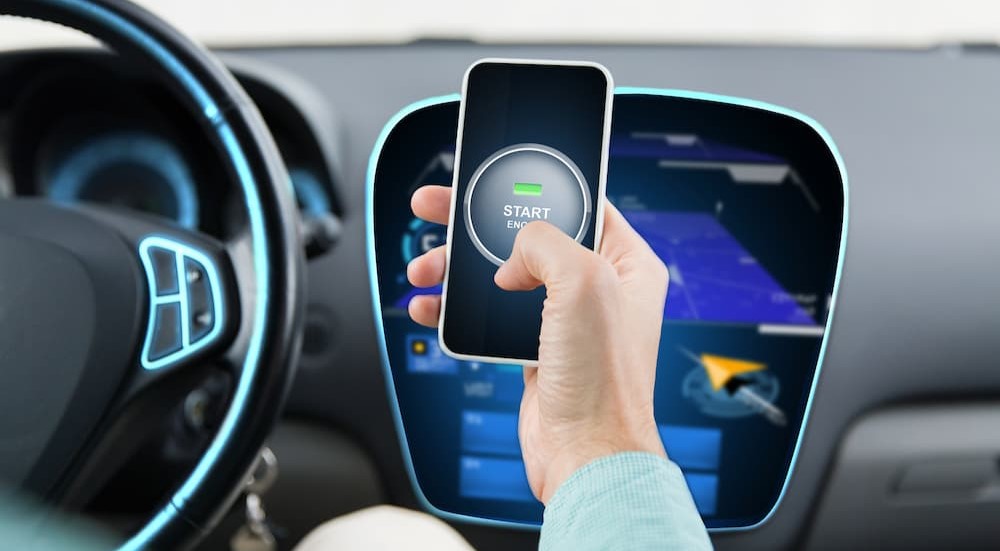Getting a new car can sometimes feel like getting into a new relationship. You learned enough to know you want to commit but still have much more to discover. You probably know from past vehicles that you feel completely different in your vehicle one week into ownership versus one year. No matter how experienced of a driver you are, it can feel like you’re learning some elements of driving all over again when you get a new vehicle.
There are several things you can do to make sure you’re as ready as possible to safely drive your new vehicle and enjoy all of its features. There are some questions you can ask at your dealership service center. Whether it’s a Buick service center or another brand, technicians specializing in your vehicle will greatly educate you on your specific model. However, there are also some things you’ll want to do on your own after leaving the dealership.
Learn the Maintenance Schedule
Your service technicians can review this with you, and it should also be in the owner’s manual. Be sure to jot down in your calendar exactly when you’ll be due for routine services like oil changes, tire rotations, full inspections, and other regular maintenance. It’s best to have these services performed in a preventative way instead of waiting for a warning light to come on or, worse, an issue to arise. Every vehicle is different, so you don’t just want to Google a generic question like “How often should I get an oil change?” Your specific make and model dictates the answer, which can vary by many miles from one vehicle to another.
Consult the Manual
We know that the manual is dense. You don’t need to read it cover to cover. But, you should familiarize yourself with some of the major items. It’s a good idea to read the section that covers how the vehicle should and should not be used. Here, you’ll learn whether you can add snow tires to your vehicle, tow with it, leave paved roads, and do other activities. Disregarding what you read here could put you in danger. It could also mean that your warranty or insurance company rejects a claim for misusing the vehicle, as the manual states.

Connect Your Smartphone
Most new vehicles have smartphone connectivity. Syncing your smartphone to your infotainment system lets you handle various smartphone tasks from your vehicle’s touchscreen. You can change songs, view turn-by-turn directions from your navigation app, check the weather, and more. You should also sync your smartphone to the Bluetooth system to make hands-free calls and send hands-free texts if your vehicle can do this.
Understand the Dashboard Lights
The dashboard lights give you critical information about issues that range from mild to urgent, so it’s important to know what each one means. These lights can tell you about problems like low tire pressure, a battery issue, low windshield wiper fluid, and engine malfunctions. They can also tell you perfectly normal information, such as your headlights or cruise control being on. These indicators look slightly different from one model to another, so get to know exactly what yours looks like for your specific vehicle.
Test Driver Assist Features
If your vehicle comes with drive -assist features, test them out. You won’t be able to test all of them for safety reasons (for example, you don’t want to find out if the airbags work), you can test features like your blind spot monitor and lane departure warning. When vehicles approach your blind spot, notice if your blind zone alerts go off. When it is safe to do so, drift slightly from your lane and see if your lane departure warning and/or lane keep assist activate, just so you know how they sound and feel when they activate when you’re not expecting them to.
You depend on these features to save you from accidents. Plus, you pay extra for them, so make sure they work. Learning in a low-stakes setting is better than when you actually need them.
Familiarize Yourself with Other Important Features
You use many features daily when driving that can operate differently from one vehicle to the next. Make sure you know where the controls are for your windshield wipers, your headlights, and your flashers. It’s also nice to familiarize yourself with comfort and convenience features like the climate control system and the light dimming for your rearview mirror.
Use the Memory Presets
If you have a newer vehicle and/or an upper trim, your model probably has memory settings for items like your driver’s seat and exterior mirrors. Take a few minutes to adjust these to your preferred settings. Find the ideal height and angle for your driver’s seat so that you feel comfortable, can reach the pedals and steering wheel, and can see the road well. Find the right angles for your exterior mirrors to boost visibility around your vehicle. When you’ve found the ideal settings for these items, have the memory system register them so your vehicle will return to them each time you turn on the engine.

Add Important Safety Accessories
Many new vehicles come with a starter kit of safety accessories. See what comes with yours, and if you need to, add the following items:
- Reflective triangles. If you have to pull over, you can set these outside of your vehicle to alert other drivers to your presence.
- Tire pressure gauge and pump. If that low tire pressure warning goes off and you’re far away from a service station, you’ll be glad to be able to fix the problem yourself. If it’s too low, a gauge can confirm whether the tire pressure is actually low or if it’s a faulty sensor. If the pressure is low, the pump will let you inflate it yourself. If the pressure holds, you can continue on your way, but use the gauge to check it again to make sure you don’t have a puncture.
- A flashlight or headlamp. If you must pull over and assess an issue in the dark, you’ll want a flashlight or headlamp to see what you’re working on.
- Ponchos. If you have to change a tire or address another issue in the rain, you’ll be glad to have these. Opt for reflective ones so that other vehicles can see you.
- Jumper cables. You can use these to attach your dead battery to the battery of another vehicle to jump-start your engine.
- Nonperishable food and water. If you’re stuck in the middle of nowhere for a long time waiting for a tow truck, you’ll be glad to have these.
These are just some of the basic emergency items to keep on hand while you wait for professional assistance. If you know vehicle repair and can handle more advanced issues yourself, your emergency kit might be more comprehensive.
Take It for a Spin
Take your vehicle for a spin around town. Drive it on city streets and the highway. It’s even a good idea to do a run-through of your daily routine (go to work, go to the gym, stop by the kid’s school etc.). This will let you encounter all of the features you’ll be using on your daily drive and allow you to get to know them when you aren’t in a hurry. It also allows you to test the acceleration, learn how sensitive the brakes are, get comfortable with the gear shift, and generally get cozy with your new vehicle.

